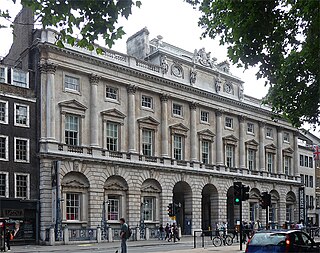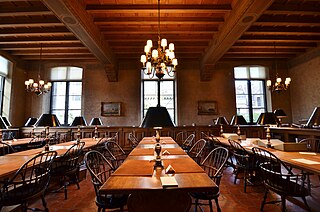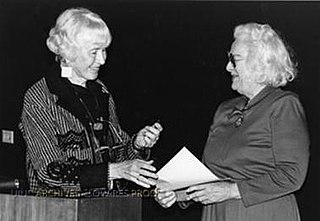Timeline: Development of visual resources (collections and profession) in the U.S.
1865. First lantern slide collections begin developing in the U.S. These 3.25" x 4.0" glass slides projected clearly with great detail. However, projectors required lime light which was dirty and dangerous
1887. First transparent, flexible nitrocellulose film base developed
1888. First perforated film stock developed
1889. Eastman combined nitrocellulose film stock, perforated edges, and dry-gelatino-bromide emulsion to create the first paperless film stock
1902. Court denies Eastman's exclusive patent, allowing any company to develop 35mm film
1905. UC Berkeley's Architecture Library acquires its first lantern slide, the tree of architecture, made from Banister Fletcher's book, A History of Architecture on the Comparative Method
1909. 35mm adopted as the international standard gauge by Motion Picture Patents Company, an Edison trust
1913. 35mm film format introduced into still photography
1925. Leica Camera introduced, using 35mm still film
1930. Safety film introduced (cellulose diacetate)
1934–1936. Kodachrome 35mm slide film introduced, but not widely adopted by colleges and universities. Film stock was either flammable or brittle
1949. Kodak replaces all nitrate-based films with its safety film, a cellulose-triacetate base
1952. All camera film is now triacetate based, paving the way for widespread adoption of 35mm film in both amateur and academic markets
1952+ American faculty widely divided in their allegiances to lantern slides for their clarity or to 35mm slides for their ease of production and transport to class. Huge debates begin about whether 35mm color film is stable enough for adoption and whether the loss of clarity will ruin the teaching of art history. Younger faculty adopt 35mm film, while older faculty prefer lantern slides
1968. Visual resources curators begin meeting during annual College Art Association (CAA) conferences
1969. Art Libraries Society, established in the United Kingdom and Ireland, founded
1969. The first "universal" classification system published by Luraine Tansey and Wendell Simons under the title, A slide classification system for the organization and automatic indexing of interdisciplinary collections of slides and pictures
1972. Art Libraries Society of North America (ARLIS/NA) founded by a group of art librarians attending the American Library Association annual conference in Chicago
1972. Nancy DeLaurier organizes the visual resources curators of Mid-America College Art Association
1974. Slide libraries; a guide for academic institutions and museums, by Betty Jo Irvine. Published by Libraries Unlimited for Art Libraries Society
1974. Mid-America College Art Association slides and photographs newsletter begins publishing under the leadership of Nancy DeLaurier
1974. Slide buyer's guide, revised edition, edited by Nancy DeLaurier, published by University of Missouri-Kansas City, "for The College Art Association of America". Limited to 500 copies
1976. Slide buyer's guide, 3rd edition, edited by Nancy DeLaurier, published by the College Art Association
1978. Guide for Photograph Collections, edited by Nancy Schuller and Susan Tamulonis, published by MACAA/VR
1978. Guide to Equipment for Slide Maintenance and Viewing, edited by Gillian Scott, published by MACAA/VR
1979. Slide libraries : a guide for academic institutions, museums, and special collections, by Betty Jo Irvine with assistance from P. Eileen Fry. Libraries Unlimited
1979. Guide for the Management of Visual Resources Collections, edited by Nancy Schuller and published by MACAA/VR (Mid-America College Art Association Visual Resources Committee)
1980. Guide to Copy Photography for Visual Resource Collections, edited by Rosemary Kuehn and Arlene Zelda Richardson, published by MACAA/VR
1980. Standard for staffing fine arts slide collections, by the Ad-hoc Committee on Professional Standards for Visual Resources Collections
1980. Slide buyer's guide, 4th edition, edited by Nancy DeLaurier, published by Mid-America College Art Association, Visual Resources Committee
1980. MACAA slides and photographs newsletter reborn as the International Bulletin for Photograph Documentation of the Visual Arts
1980. Visual Resources: an international journal of documentation launched by Helene Roberts, published by Iconographic Publications
1980. Art and Architecture Thesaurus project launched to provide subject access for art and architecture
1982–1983. Visual Resources curators from MACAA/VR, CAA, and ARLIS/NA launch Visual Resources Association (VRA)
1983. Standards for art libraries and fine arts slide collections, published as Occasional Paper No. 2 of ARLIS/NA
1985. Slide buyers' guide : an international directory of slide sources for art and architecture, 5th edition, edited by Norine Duncan Cashman, index by Mark Braunstein, published by Libraries Unlimited as part of their Visual resources series
1986. Sara Shatford Layne publishes "Analyzing the Subject of a Picture: A Theoretical Approach"in Cataloging and Classification Quarterly, vol. 6(3)
1987. Toni Petersen, President of ARLIS/NA, urges the Visual Resources Division, to begin developing some standard authorities for shared cataloging
1988. Barneyscan, first dedicated 35mm slide scanner, introduced
1989. Visual Resources Association launches its bulletin
1990. Art and Architecture Thesaurus, Toni Petersen, editor, published by Oxford University Press in 3 volumes. Critical step in providing subject access to individual 35mm slides in visual resources collections
1990. Slide buyers' guide : an international directory of slide sources for art and architecture, 6th edition edited by Norine Duncan Cashman, published by Libraries Unlimited, Visual resources series. At head of title: Visual Resources Association
1990. Beyond the Book: Extending MARC for Subject Access, edited by Toni Petersen and Pat Molholt, by G.K. Hall. Several papers on visual resources, including : "Access to Diverse Collections in University Settings: the Berkeley Dilemma", by Howard Besser and Maryly Snow, and "Visual Depictions and the Use of MARC: A View from the Trenches of Slide Librarianship", by Maryly Snow
1990. Tim Berners-Lee starts work on a hypertext graphical-user-interface (GUI) and makes up the name World Wide Web as the name for the program
1991. Facilities Standards for Art Libraries and Visual Resources Collections, edited by Betty Jo Irvine. Published by Libraries Unlimited for ARLIS/NA
1991. World Architecture Index: a Guide to Illustrations, compiled by Edward H. Teague, published by Greenwood Press as part of its Art Reference Collection No. 12
1991. Visual Resources Association creates its listserv, VRA-L, a vital communication tool for its visual resources curators members
1992. Users' Guide to The Art and Architecture Thesaurus, published along with the electronic edition by Oxford University Press
1993. Visual Resources Association established its Data Standards Committee
1994. March. Marc Andreessen leaves National Center for Supercomputing Applications (NCSA) to found the Mosaic Communications Corp, later becomes Netscape. Mosaic launches the World Wide Web for the general public
1994. September. First image database, SPIRO, debuts on the World Wide Web.
1995. Concordance of Ancient Site Names, edited by Eileen Fry and Maryly Snow, published as Topical Paper No. 2 of ARLIS/NA (see 1987 call for visual resources authority work). This is one of the first scholarly authorities created by visual resources curators for visual resources cataloging
1995. Criteria for the Hiring and Retention of Visual Resources Professionals adopted by the executive boards of both ARLIS/NA and VRA
1996. Art and Architecture Thesaurus Sourcebook, edited by Toni Petersen, published as Occasional Paper No. 10 of ARLIS/NA
1996. Staffing Standards for Art Libraries and Visual Resources Coillections, published as Occasional Paper No. 11 of ARLIS/NA
1996. VRA Core 1.0 released
1998. Vision Project, sponsored by Research Libraries Group. First shared cataloging project with 32 visual resources collections cataloging and sharing images. Vision Project also served as a test of VRA Core 1.0
1998. VRA Core 2.0 released
1998. ArtMARC Sourcebook: Cataloging Art, Architecture, and Their Visual Images, edited by Linda McRae and Lynda White, published by American Library Association
2000. Guidelines for the Visual Resources Profession, edited by Kim Kopatz. A joint publication of ARLIS/NA and VRA
2000. Collection Development Policies for Libraries and Visual Collections in the Arts, compiled by Ann Baird Whiteside, Pamela Born, Adeane Alpert Bregman, published as Occasional Paper No. 12 of ARLIS/NA
2001. VRA Copy Photography Computator (for determining intellectual property restrictions and fair use) released
2002. VRA Core 3.0 released
2002. Criteria for the Hiring and Retention of Visual Resources Professionals updated, and adopted by ARLIS/NA, VRA, and College Art Association
2004. ARTstor image database, a project of the Andrew Mellon Foundation, is available for licensing. ARTstor combines finding, organizing, and presenting images in one integrated software environment
2004. Kodak discontinues manufacturing its 35mm carousel projectors and carousels. This sends a strong signal to American professors that the time to switch from 35mm slides to digital images is now
2004. North American Lantern Slide Survey begun, jointly sponsored by ARLIS/NA and VRA
2005. VRA Core 4.0 Beta released
2006. Cataloging Cultural Objects published by American Library Association. Edited by Murtha Baca, Patricia Harpring, Elisa Lanzi, Linda McRae, Ann Baird Whiteside on behalf of the Visual Resources Association
2007. VRA Core 4.0 released

The Courtauld Institute of Art, commonly referred to as The Courtauld, is a self-governing college of the University of London specialising in the study of the history of art and conservation. It is among the most prestigious specialist colleges for the study of the history of art in the world and is known for the disproportionate number of directors of major museums drawn from its small body of alumni.

A slide show, or slideshow, is a presentation of a series of still images (slides) on a projection screen or electronic display device, typically in a prearranged sequence. The changes may be automatic and at regular intervals or they may be manually controlled by a presenter or the viewer. Slide shows originally consisted of a series of individual photographic slides projected onto a screen with a slide projector. When referring to the video or computer-based visual equivalent, in which the slides are not individual physical objects.

Sterling Memorial Library (SML) is the main library building of the Yale University Library system in New Haven, Connecticut, United States. Opened in 1931, the library was designed by James Gamble Rogers as the centerpiece of Yale's Gothic Revival campus. The library's tower has sixteen levels of bookstacks containing over 4 million volumes. Several special collections—including the university's Manuscripts & Archives—are also housed in the building. It connects via tunnel to the underground Bass Library, which holds an additional 150,000 volumes.
Artstor is a nonprofit organization that builds and distributes the Digital Library, an online resource of more than 2.5 million images in the arts, architecture, humanities, and sciences, and Shared Shelf, a Web-based cataloging and image management software service that allows institutions to catalog, edit, store, and share local collections.

Archnet is a collaborative digital humanities project focused on Islamic architecture and the built environment of Muslim societies. Conceptualized in 1998 and originally developed at the MIT School of Architecture and Planning in co-operation with the Aga Khan Trust for Culture. It has been maintained by the Aga Khan Documentation Center at MIT and the Aga Khan Trust for Culture since 2011.

The Frick Art Reference Library is the research arm of The Frick Collection. Its reference services have temporarily relocated to the Breuer building at 945 Madison Avenue, called Frick Madison, during the renovation of the Frick's historic buildings at 10 East 71st Street in New York City. The library was founded in 1920 and it offers public access to materials on the study of art and art history in the Western tradition from the fourth to the mid-twentieth century. It is open to visitors 16 years of age or older and serves the greater art and art history research community through its membership in the New York Art Resources Consortium.
The Art Libraries Society of North America was founded in 1972. It is an organization made up of approximately 1,000 art librarians, library students and visual resource professionals.

Luraine Tansey was an American slide librarian who created the first Universal Slide Classification System in 1969 with Wendell Simons.
The Visual Resources Association is an international organization for image media professionals.
George Everard Kidder Smith was an American architect, author, educator, photographer and prolific “builder” of books and curator of exhibitions.
The Getty Vocabulary Program is a department within the Getty Research Institute at the Getty Center in Los Angeles, California. It produces and maintains the Getty controlled vocabulary databases, Art and Architecture Thesaurus, Union List of Artist Names, and Getty Thesaurus of Geographic Names. They are compliant with ISO and NISO standards for thesaurus construction. The Getty vocabularies are the premiere references for categorizing works of art, architecture, material culture, and the names of artists, architects, and geographic names. They have been the life work of many people and continue to be critical contributions to cultural heritage information management and documentation. They contain terms, names, and other information about people, places, things, and concepts relating to art, architecture, and material culture. They can be accessed online free of charge on the Getty website.
Anthony Slide is an English writer who has produced more than seventy books and edited a further 150 on the history of popular entertainment. He wrote a "letter from Hollywood" for the British Film Review magazine from 1979 to 1994, and he wrote a monthly book review column for Classic Images from 1989 to 2001. He is a member of the editorial board of the American Film Institute Catalog.

The Association of Architecture School Librarians (AASL) was founded in 1979. Its membership is open to any person or institution interested in the advancement of academic architectural librarianship and architecture education.
Willard "Herc" Detering Morgan was a photographer, writer, editor, and educator and the husband of photographer Barbara Morgan, known for her documentation of Martha Graham's dances.

Multi-image is the now largely obsolete practice and business of using 35mm slides (diapositives) projected by single or multiple slide projectors onto one or more screens in synchronization with an audio voice-over or music track. Multi-image productions are also known as multi-image slide presentations, slide shows and diaporamas and are a specific form of multimedia or audio-visual production.
The Cornell Fine Arts Library is an extensive educational facility that services the College of Architecture, Art, and Planning at Cornell University. In 1871, three years into his tenure as the first president of Cornell University, Andrew Dickson White proposed to give his architectural library, the largest collection in the country at that time, to the university in return for the creation of a Department of Architecture. In the following decade, the College of Architecture grew and so did the library, collecting the working drawings of leading architects of the day. As the architecture department moved to accommodate a need for more space, between building on the Cornell Central Campus, the library moved and expanded with it.
Erkki Huhtamo is a media archaeologist, exhibition curator, and professor at the University of California, Los Angeles in the Departments of Design Media Arts and Film, Television, and Digital Media.
Online Audiovisual Catalogers, Inc., otherwise known as OLAC, was founded in 1980 as a group of library catalogers involved in the cataloging of audiovisual materials, but now supports the work of catalogers working on all nonprint resources. OLAC provides a way for catalogers to have a method of communication among themselves as well as with the Library of Congress. The first official meeting of the group happened on July 1, 1980, in New York City with Nancy B. Olson chairing the group of catalogers.
Murtha Baca was an American educator and professional renowned in the field of information science, particularly for her expertise in the area of metadata and digital information systems.
Nancy Grace Butterfield Olson was an American librarian and educator, an expert on cataloging rules for non-print materials, and the founder of the Online Audiovisual Catalogers (OLAC).









